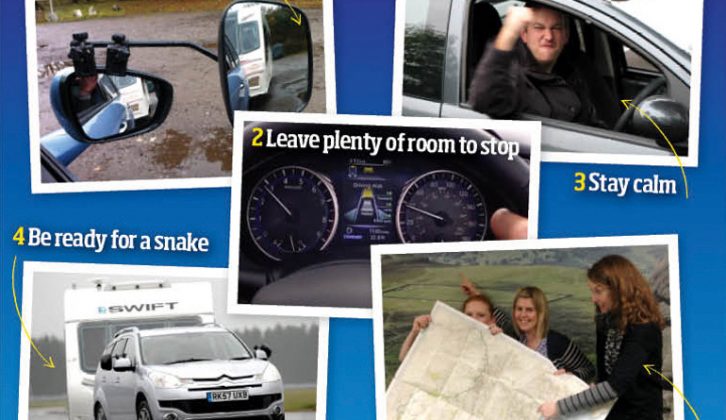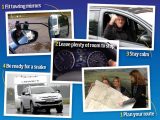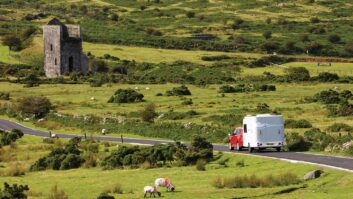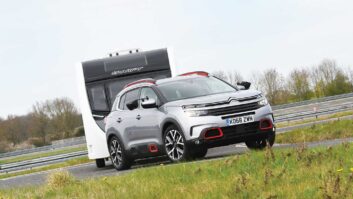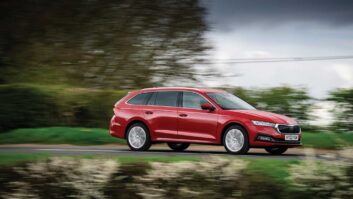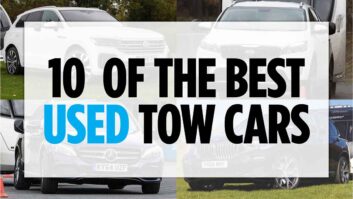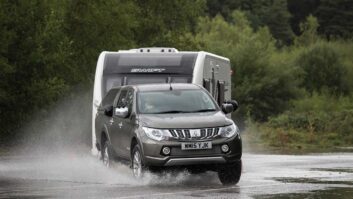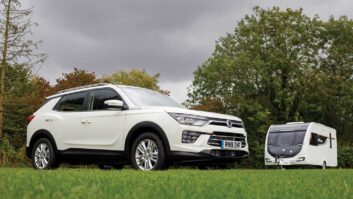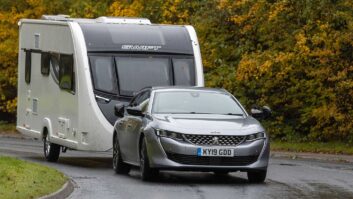Some people love towing, others see it as a necessary evil at the beginning and end of their caravan holidays. One thing’s for sure, whether you enjoy towing or see it as a chore, the better your driving, the more stress-free and safe every journey will become.
Matching car and caravan correctly and making sure the tourer has been carefully loaded make a big difference, but so does the attitude and skill of the caravanner behind the wheel.
If you find towing the least fun part of caravanning, hopefully these tips will help you become a safer, more confident and happier tow car driver.
1. Fit towing mirrors
I’m amazed by the number of drivers you seeing towing caravans without extension mirrors. Even drivers towing wide and long twin-axle caravans seem to think they can do without them.
To comply with towing laws, you should be able to see 20 metres behind you and four metres each side of the towed outfit. Very few car and caravan combinations allow the driver to see that far behind them without fitting additional mirrors.
Even setting aside the law for a moment, why would you not want to see clearly behind you? Overtaking and changing lanes is safer and easier when you have a proper view in your mirrors.
2. Leave plenty of room to stop
Stopping distances increase when towing. Our colleagues on What Car? usually find cars stop from 30mph in around eight to 10 metres in dry conditions – when we perform the same test with a caravan the stopping distance is generally 10 to 12 metres.
It’s not just that a car and caravan take longer to stop than a car driven solo. A caravan restricts the vision of the driver behind you, making it more difficult for them to see the brake lights of vehicles further up the road. That makes it harder for the driver behind to anticipate the need to slow down and apply their brakes in good time, unless they’ve had the sense to leave extra room themselves.
By allowing yourself more space you won’t have to brake hard very often, and there’s less chance of a tailgating driver rearranging the washroom of your pride and joy with the front of their car.
3. Stay calm and don’t rush
Always allow plenty of time for any towing journey, especially when travelling at peak times. It’s better to take a, “we’ll get there when we get there” attitude rather than rushing to keep to an unrealistic schedule.
Nobody likes being stuck in traffic, but it’s when drivers become angry, frustrated and impatient that we start to make poor decisions and drive more aggressively.
There’s no place for aggressive driving or road rage when towing. It’s all about being smooth, observant and putting safety first at all times.
When we’re running late it’s tempting to nudge the speed that bit higher. Maybe the outfit feels just as stable at 65mph as it does at 60mph. Maybe. But will it still feel that way when the wind gusts or you next overtake a high-sided vehicle?
Don’t push your luck by driving too fast, or you’ll risk points on your licence or even a snake which could turn into an accident.
4. Be ready for a snake
Talking of a snake, if your caravan does become unstable, be ready for it. A snake (when the caravan begins to sway from side to side, pulling at the back of the tow car) can be a frightening experience, but take the right action, and car and caravan should come back under control.
Don’t be tempted to accelerate hard to try to pull the outfit straight again. You’ll only make things worse. Don’t jump hard on the brake pedal either as you could jackknife the outfit.
Instead, gently ease off the throttle and take a light grip on the wheel. It may take a second or two, but as the outfit slows, the snaking will gradually die away.
Take a deep breath, and reward yourself with a cuppa and a sticky bun at the next services.
5. Plan your route
It really pays to plan your journey when towing. Remember, the best route with a caravan isn’t necessarily the best route when driving solo.
Some campsites give advice on their website about the best way to tackle the last few miles, avoiding narrow roads and sharp bends.
If there’s no preferred route online, give the campsite a call to ask their advice. Even if they confirm that the most direct route will pose no problems when towing, it’s better and reassuring to know this before you set off.
The better your driving, the more stress-free and safe every journey will become
